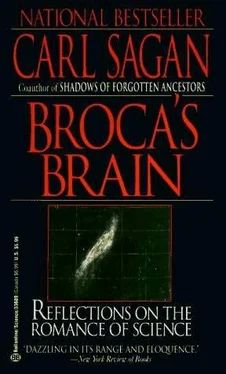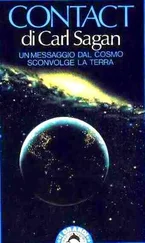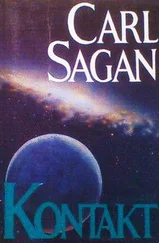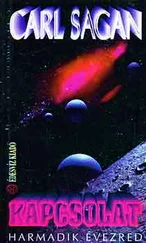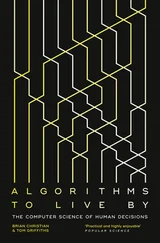Carl Sagan - Broca's Brain - The Romance of Science
Здесь есть возможность читать онлайн «Carl Sagan - Broca's Brain - The Romance of Science» весь текст электронной книги совершенно бесплатно (целиком полную версию без сокращений). В некоторых случаях можно слушать аудио, скачать через торрент в формате fb2 и присутствует краткое содержание. Жанр: Физика, на английском языке. Описание произведения, (предисловие) а так же отзывы посетителей доступны на портале библиотеки ЛибКат.
- Название:Broca's Brain: The Romance of Science
- Автор:
- Жанр:
- Год:неизвестен
- ISBN:нет данных
- Рейтинг книги:3 / 5. Голосов: 1
-
Избранное:Добавить в избранное
- Отзывы:
-
Ваша оценка:
- 60
- 1
- 2
- 3
- 4
- 5
Broca's Brain: The Romance of Science: краткое содержание, описание и аннотация
Предлагаем к чтению аннотацию, описание, краткое содержание или предисловие (зависит от того, что написал сам автор книги «Broca's Brain: The Romance of Science»). Если вы не нашли необходимую информацию о книге — напишите в комментариях, мы постараемся отыскать её.
Broca's Brain: The Romance of Science — читать онлайн бесплатно полную книгу (весь текст) целиком
Ниже представлен текст книги, разбитый по страницам. Система сохранения места последней прочитанной страницы, позволяет с удобством читать онлайн бесплатно книгу «Broca's Brain: The Romance of Science», без необходимости каждый раз заново искать на чём Вы остановились. Поставьте закладку, и сможете в любой момент перейти на страницу, на которой закончили чтение.
Интервал:
Закладка:
But this uncomfortable revelation did not faze the American entrepreneur P. T. Barnum, who offered $60,000 for a three-month lease on the Cardiff Giant. When Barnum failed to secure it for traveling exhibition (the owners were making too much money to give it up), he simply had a copy made and exhibited it , to the awe of his customers and the enrichment of his pocketbook. The Cardiff Giant that most Americans have seen is this copy. Barnum exhibited a fake fake. The original is today languishing at the Farmer’s Museum in Cooperstown, New York. Both Barnum and H. L. Mencken are said to have made the depressing observation that no one ever lost money by underestimating the intelligence of the American public. The remark has worldwide application. But the lack is not in intelligence, which is in plentiful supply; rather, the scarce commodity is systematic training in critical thinking.
IN THE EARLY YEARS of the twentieth century there was a horse in Germany who could read, do mathematics and exhibit a deep knowledge of world political affairs. Or so it seemed. The horse was called Clever Hans. He was owned by Wilhelm von Osten, an elderly Berliner whose character was such, everyone said, that fraud was out of the question. Delegations of distinguished scientists viewed the equine marvel and pronounced it genuine. Hans would reply to mathematical problems put to him with coded taps of his foreleg, and would answer nonmathematical questions by nodding his head up and down or shaking it side to side in the conventional Western way. For example, someone would say, “Hans, how much is twice the square root of nine, less one?” After a moment’s pause Hans would dutifully raise his right foreleg and tap five times. Was Moscow the capital of Russia? Head shake. How about St. Petersburg? Nod.
The Prussian Academy of Sciences sent a commission, headed by Oskar Pfungst, to take a closer look; Osten, who believed fervently in Hans’s powers, welcomed the inquiry. Pfungst noticed a number of interesting regularities. Sometimes, the more difficult the question, the longer it took Hans to answer; or when Osten did not know the answer, Hans exhibited a comparable ignorance; or when Osten was out of the room, or when the horse was blindfolded, no correct answers were forthcoming. But other times Hans would get the right answer in a strange place, surrounded by skeptics, with Osten not only out of the room, but out of town. The solution eventually became clear. When a mathematical question was put to Hans, Osten would become slightly tense, for fear Hans would make too few taps. When Hans, however, reached the correct number of taps, Osten unconsciously and imperceptibly nodded or relaxed-imperceptibly to virtually all human observers, but not to Hans, who was rewarded with a sugar cube for correct answers. Even teams of skeptics would watch Hans’s foot as soon as the question was put and make gestural or postural responses when the horse reached the right answer. Hans was totally ignorant of mathematics, but very sensitive to unconscious nonverbal cues. Similar signs were unknowingly transmitted to the horse when verbal questions were posed. Clever Hans was aptly named; he was a horse who had conditioned one human being and discovered that other human beings he had never before met would provide him the needed cues. But despite the unambiguous nature of Pfungst’s evidence, similar stories of counting, reading and politically sage horses, pigs and geese have continued to plague the gullible of many nations. [2]
ONE OF THE MOST striking apparent instances of extrasensory perception is the precognitive experience, when a person has a compelling perception of an imminent disaster, the death of a loved one, or a communication from a long-lost friend, and the predicted event then transpires. Many who have had such experiences report that the emotional intensity of the precognition and its subsequent verification provide an overpowering sense of contact with another realm of reality. I have had such an experience myself. Many years ago I awoke in the dead of night in a cold sweat, with the certain knowledge that a close relative had suddenly died. I was so gripped with the haunting intensity of the experience that I was afraid to place a long-distance phone call, for fear that the relative would trip over the telephone cord (or something) and make the experience a self-fulfilling prophecy. In fact, the relative is alive and well, and whatever psychological roots the experience may have, it was not a reflection of an imminent event in the real world.
However, suppose the relative had in fact died that night. You would have had a difficult time convincing me that it was merely coincidence. But it is easy to calculate that if each American has such a premonitory experience a few times in his lifetime, the actuarial statistics alone will produce a few apparent precognitive events somewhere in America each year. We can calculate that this must occur fairly frequently, but to the rare person who dreams of disaster, followed rapidly by its realization, it is uncanny and awesome. Such a coincidence must happen to someone every few months. But those who experience a correct precognition understandably resist its explanation by coincidence.
After my experience I did not write a letter to an institute of parapsychology relating a compelling predictive dream which was not borne out by reality. That is not a memorable letter. But had the death I dreamt actually occurred, such a letter would have been marked down as evidence for precognition. The hits are recorded, the misses are not. Thus human nature unconsciously conspires to produce a biased reporting of the frequency of such events.
THESE CASES-Alexander the Oracle-Monger, Keene, astral projection, the Fox sisters, the Cardiff Giant, Clever Hans and precognitive dreams-are typical of claims made on the boundary or edge of science. An amazing assertion is made, something out of the ordinary, marvelous or awesome-or at least not tedious. It survives superficial scrutiny by lay people and, sometimes, more detailed study and more impressive endorsement by celebrities and scientists. Those who accept the validity of the assertion resist all attempts at conventional explanation. The most common correct explanations are of two sorts. One is conscious fraud, usually by those with a financial interest in the outcome, as with the Fox sisters and the Cardiff Giant. Those who accept the phenomena have been bamboozled. The other explanation often applies when the phenomena are uncommonly subtle and complex, when nature is more intricate than we have guessed, when deeper study is required for understanding; Clever Hans and many precognitive dreams fit this second explanation. Here, very often, we bamboozle ourselves.
I have chosen the foregoing cases for another reason. They are all closely involved with everyday life-human or animal behavior, evaluating the reliability of evidence, occasions for the exercise of common sense. None of these cases involve technological complexities or arcane theoretical developments. We do not need an advanced degree in physics, let us say, to have our skeptical hackles rise at the pretensions of modern spiritualists. Nevertheless, these hoaxes, impostures and misapprehensions have captivated millions. How much more dangerous and difficult to assess must be borderline claims at the edge of less familiar sciences-about cloning, say, or cosmic catastrophes or lost continents or unidentified flying objects?
I make a distinction between those who perpetrate and promote borderline belief systems and those who accept them. The latter are often taken by the novelty of the systems, and the feeling of insight and grandeur they provide. These are in fact scientific attitudes and scientific goals. It is easy to imagine extraterrestrial visitors who looked like human beings, and flew space vehicles and even airplanes like our own, and taught our ancestors civilization. This does not strain our imaginative powers overly and is sufficiently similar to familiar Western religious stories to seem comfortable. The search for Martian microbes of exotic biochemistry, or for interstellar radio messages from intelligent beings biologically very dissimilar is more difficult to grasp and not as comforting. The former view is widely purveyed and available; the latter much less so. Yet I think many of those excited by the idea of ancient astronauts are motivated by sincere scientific (and occasionally religious) feelings. There is a vast untapped popular interest in the deepest scientific questions. For many people, the shoddily thought out doctrines of borderline science are the closest approximation to comprehensible science readily available. The popularity of borderline science is a rebuke to the schools, the press and commercial television for their sparse, unimaginative and ineffective efforts at science education; and to us scientists, for doing so little to popularize our subject.
Читать дальшеИнтервал:
Закладка:
Похожие книги на «Broca's Brain: The Romance of Science»
Представляем Вашему вниманию похожие книги на «Broca's Brain: The Romance of Science» списком для выбора. Мы отобрали схожую по названию и смыслу литературу в надежде предоставить читателям больше вариантов отыскать новые, интересные, ещё непрочитанные произведения.
Обсуждение, отзывы о книге «Broca's Brain: The Romance of Science» и просто собственные мнения читателей. Оставьте ваши комментарии, напишите, что Вы думаете о произведении, его смысле или главных героях. Укажите что конкретно понравилось, а что нет, и почему Вы так считаете.
